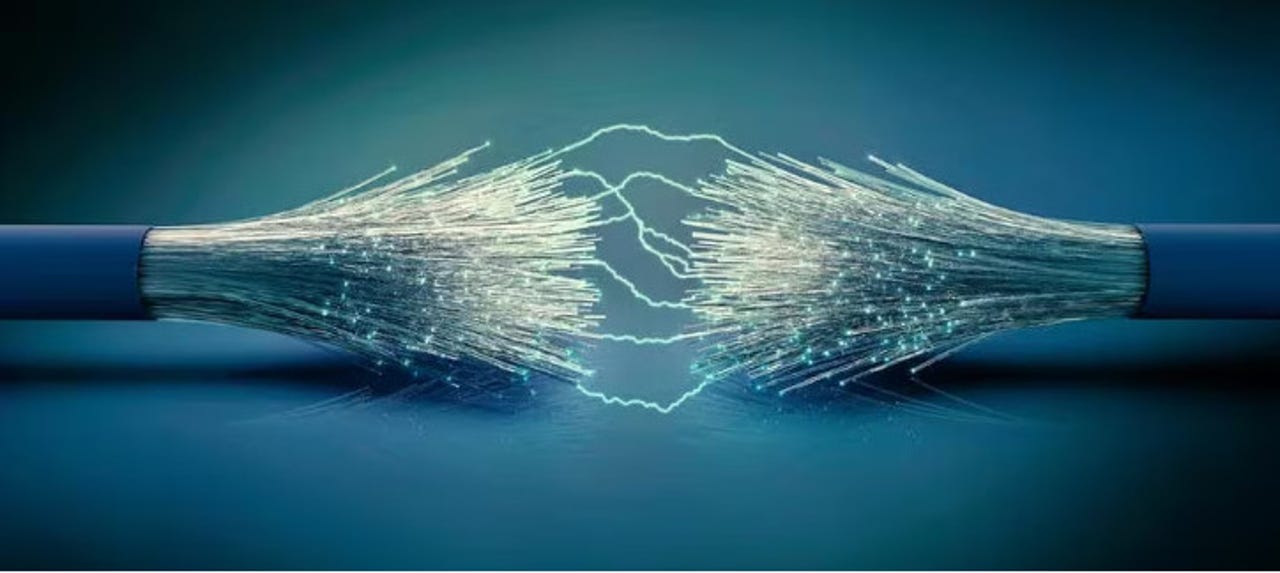Scientists hit a 301 Tbps speed over existing fiber networks


When I was a kid, I went to a science camp, and one of the instructors showed us a few inches of fiber optic cable. I remember thinking it was so neat that you could light it up at one end, and no matter how you twisted the cable, you could see the light come out on the other end. At the time, I thought how useful it might be to send Morse code through it--I was very young. Things have changed a bit since then. Today, UK Aston University researchers sent data at a 301 terabits per second (Tbps) clip over existing fiber networks.
How fast is that? It's about 1.2 million times faster than the US' medium fixed broadband speed of 242.48 megabits per second (Mbps). Or, it's fast enough to deliver 1,800 4K movies to your home in a second. And I thought my recent home internet fiber upgrade to 2 Gigabits per second (Gbps) was impressive!
Of course, no one will get 301 Tbps speeds in their home office. In the real world, I know a handful of people with 10 Gbps connections to their houses and many data centers with 40 Gbps local area networks.
Also: 10 ways to speed up your internet connection today
You or your small business almost certainly don't need Tbps rates. It's a different story, though, if you're an Internet Service Provider (ISP), a data center operator, or you're offering massive Large Language Models (LLM) through a service. In these cases, you need every bps you can get, and then some.
For people with jobs like that, you can go even faster. The National Institute of Information and Communications Technology (NICT) holds the current world record of 22.9 petabits per second, 75 times faster than the Aston University team's rate. What's important and different here though, is that you can use the Aston University approach with your existing fiber network.
Aston researchers achieved such breakneck speeds with their innovative use of the heretofore unused infrared spectrum's E-band and S-band. No one's been using these bands because ordinarily transmitting over them comes with far too many errors to be useful for network connectivity.
The researchers circumvented this issue by using optical amplifiers and optical gain equalizers to amplify the signal and monitor and adjust each wavelength channel in real-time, ensuring a solid network connection. The result is the possibility of E-band speeds on your existing optical fiber network. As Ian Phillips, an Aston University professor and one of the scientists working on the project explained, "Before the development of our device, no one had been able to properly emulate the E-band channels in a controlled way."
Also: What is Wi-Fi 7 and just how fast is it?
Professor Wladek Forysiak, who also worked on the project, added, "Growing system capacity by using more of the available spectrum—not just the conventional C-band but also other bands such as the L, S, and now E-bands—can help to keep the cost of providing this bandwidth down. It is also a 'greener solution' than deploying more, newer fibers and cables since it makes greater use of the existing deployed fiber network, increasing its capacity to carry data and prolonging its useful life & commercial value."
What this means for you is that sometime within the next few years, you can significantly speed up your existing fiber networks without vastly increasing your network bill. I think we can all agree that a faster internet that doesn't come with a huge bill is a good thing.